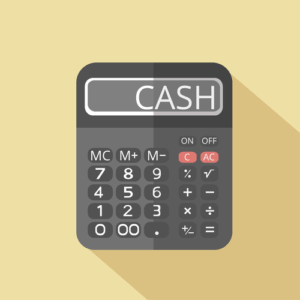
Precoro Blog is where Finance and Procurement professionals get advice, tips and news to streamline the business purchasing process. Chris Kolmar is a co-founder of Zippia and the editor-in-chief of the Zippia career advice blog. Improperly managing this cycle can lead to liquidity issues that hamper an organization’s ability to conduct business. These articles and related content is the property of The Sage Group plc or its contractors or its licensors (“Sage”). Please do not copy, reproduce, modify, distribute or disburse without express consent from Sage.These articles and related content is provided as a general guidance for informational purposes only.
Impact on Financial Statements
- This metric is the average number of days a company takes to pay suppliers after invoice receipt.
- If a buyer owes his seller a sum of money on account of purchase of goods and requires some more time to clear the payment, he may issue a note payable in favor of the seller.
- These transactions keep the business running and require strong supplier management to maintain favorable credit terms.
- As you can see there is a heavy focus on financial modeling, finance, Excel, business valuation, budgeting/forecasting, PowerPoint presentations, accounting and business strategy.
- The accounts payable team is responsible for paying the expenses that a company incurs to operate its business.
- Refinancing during key growth milestones allows businesses to take advantage of better rates, extend repayment terms, or access higher borrowing limits, all of which can improve financial flexibility.
Paying back these loans to banks or other financial institutions also helps build good credit, and notes payable overall allow businesses more time and room for strategic future planning. As explained earlier, notes payable involve how is sales tax calculated the payment of money owed to a financial institution or other creditors. They involve the payment of principal and interest and are generally longer-term payment commitments (greater than one year).

Working capital management
These articles and related content is not a substitute for the guidance of a lawyer (and especially for questions related to GDPR), tax, or compliance professional. When in doubt, please consult your lawyer tax, or compliance professional for counsel. Sage makes no representations or warranties of any kind, express or implied, about the completeness or accuracy of this article and related content. Here we provide you with the top 7 differences between Accounts Payable vs. Notes Payable. This is in the form of infographics which help in identifying and remembering the differences easily in the form of a chart.
Creating an Enforceable Promissory Note
Notes payable are loans a business borrows, listed as liabilities on the balance sheet with specified repayment terms. Accounts payable is considered a short-term liability because AP invoices are typically paid within a year’s time. In this article, we define accounts payable and notes payable, outline the main distinctions between the two, and provide some tips on how to better manage accounts payable. Notes Payable are usually entered into for specific purposes, such as financing capital projects, acquiring long-term assets, or securing funding for expansion. They represent a more deliberate decision by the business to borrow money, often for larger amounts or longer periods. Let’s consider an example of accounts payable in a typical business scenario.
Once you create a note payable and record the details, you must record the notes payable vs accounts payable loan as a note payable on your balance sheet (which we’ll discuss later). On your company’s balance sheet, the total debits and credits must equal or remain “balanced” over time. This article aims to explain the difference between notes payable and accounts payable and how they are used in organizations. If the corporation and the creditor agree on the terms and conditions of the note, it is drafted, signed, and issued to the creditor.
What is an example of a note payable?
- Without it, the benefit of strategic financing can be diminished or even become a vector for financial risk.
- Learn all about notes payable in accounting and recording notes payable in your business’s books.
- This borrowed cash is typically used to fund large purchases rather than run a company’s day-to-day operations.
- It also shows the amount of interest paid with each installment and the remaining balance on the loan after each payment.
- Sarah communicated with the service provider, proposing to convert the $3,000 accounts payable into a notes payable arrangement.
- Another entry on June 30 shows interest paid during that duration to prepare company A’s semi-annual financial statement.
- AP reflects short-term liquidity, while NP affects long-term debt obligations and creditworthiness.
Effectively managing notes payable ensures your business can leverage financing opportunities while minimizing risks, keeping operations financially sound and sustainable. Accounts payable vs notes payable is a financial topic that explains the basic differences between the two forms of liabilities owed by the entity to the lenders. At some point or another, you may turn to a lender to borrow funds and need to eventually repay them. Learn all about notes payable in accounting and recording notes payable in your business’s books. Payment terms for notes payable can be short-term (due within one year) or long-term (over one year), typically with interest and a structured repayment schedule.
Table of Contents
- Excessive long-term debt can also inhibit company growth since the increased debt makes it more difficult to obtain additional loans or make additional outside investments.
- Cost Considerations and Strategic BenefitsInstead of selling shares to raise capital (which dilutes ownership), companies often prefer notes payable as a way to fund expansion while retaining control.
- The supplier offers 30-day payment terms, which means the retail store has 30 days to pay the outstanding amount.
- It is closely tied to a company’s procurement function and operational efficiency.
- Chartered accountant Michael Brown is the founder and CEO of Double Entry Bookkeeping.
- Both accounts payable and notes payable share the common aspect of being payable in nature, meaning they involve debts that a company must pay to settle its obligations.
- XYZ Retail is a small clothing store that purchases inventory from various suppliers on credit terms.
On the other hand, notes payable refers to a written promise made by a borrower to repay a lender a specific sum of money at a specified future date or https://www.bookstime.com/articles/quickbooks-proadvisor upon the holder’s demand. Notes payable often involve larger, long-term assets such as buildings and equipment and have both principal and interest components. Appearing as a liability on the balance sheet, notes payable generally have a longer-term nature, greater than 12 months.

Main Differences Between Notes Payable and Accounts Payable
In closing, the accurate recording and management of accounts payable and notes payable are vital components of a successful financial strategy. Ensuring proper handling of these two aspects will contribute to a company’s overall financial health and stability, benefiting both the company and its stakeholders. These examples show the practical application of accounts payable and notes payable in everyday business scenarios.
Accounts Payable and Notes Payable FAQ

A high accounts payable balance providing you with additional working capital, while a lower AP balance gives you less working capital to use for your business. Your accounts payable balance also directly impacts your cash flow statement along with your working capital. They are recorded as either current or long-term liabilities on the balance sheet, depending on their maturity date.

